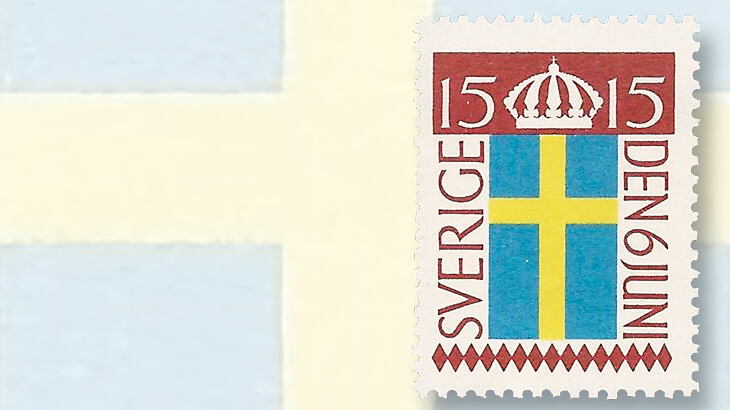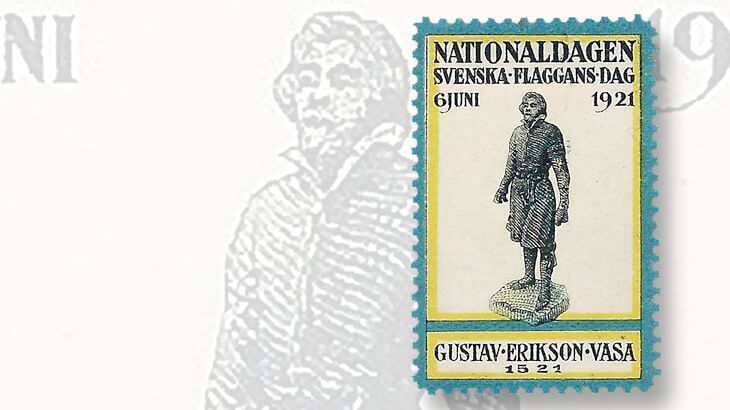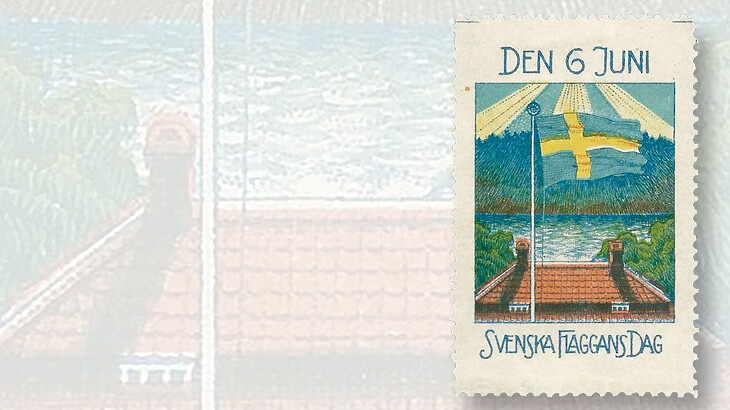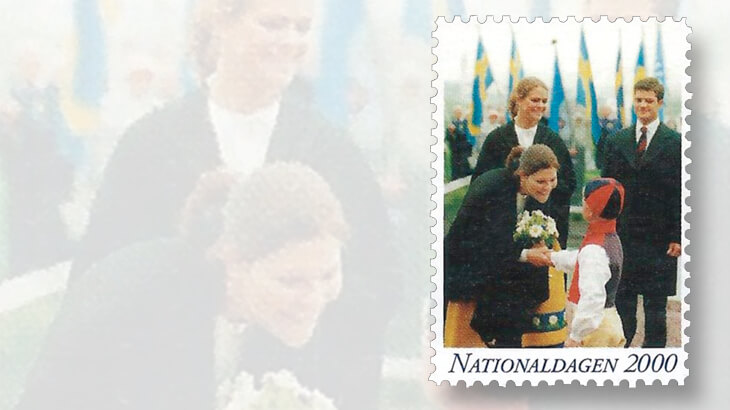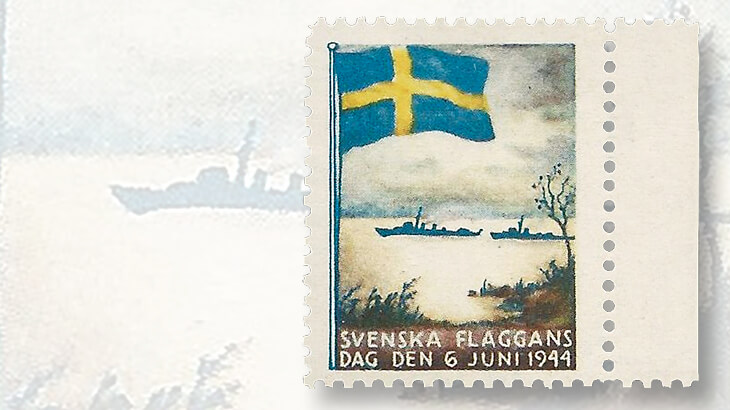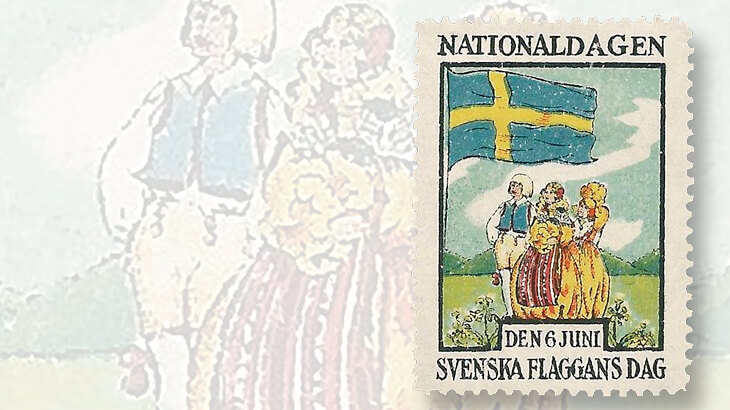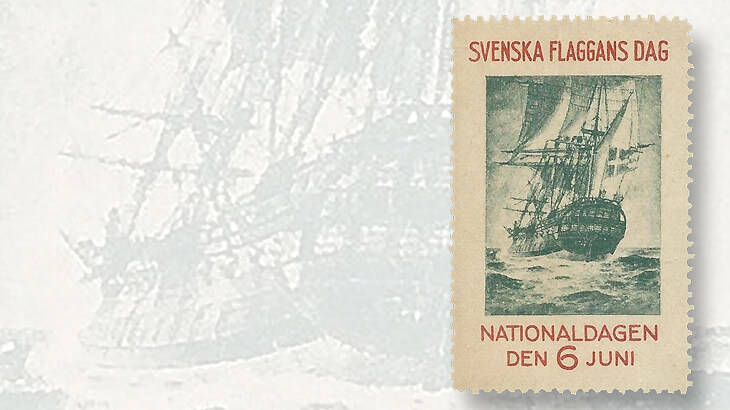World Stamps
Poster stamps celebrate National Day and Swedish Flag Day: Nordic Stamp Scene
By Christer Brunstrom
June 6, 2016, was a gloriously sunny day in the southwestern corner of Sweden where I reside. Having just returned from the June 6 National Day celebrations as this is being written, it seems only natural to devote this Nordic Stamp Scene column to the Day of the Swedish Flag, also known as National Day.
Sweden is a nation that has not been involved in any wars for more than 200 years, except for numerous United Nations peacekeeping missions in the Balkans, the Middle East and Africa.
Perhaps that is why most Swedes don’t share the strong patriotic feelings that are present in countries such as the United States, where national symbols such the White House or the American flag feature regularly on postage stamps.
Connect with Linn’s Stamp News:
Sign up for our newsletter
Like us on Facebook
Follow us on Twitter
Having said that, I still believe that most Swedes feel very strongly about their country (and especially so when it comes to international sporting activities such as soccer and ice hockey).
Since 1983, Sweden has officially celebrated National Day on June 6, and in 2005 it was made a public holiday. However, National Day has a much longer history than that.
The reasons for selecting June 6 are probably not well-known to all Swedes. The date actually commemorates two events: the election of King Gustav Vasa in 1523 and the adoption of the constitutional form of government in 1809. Both of these events happened on the sixth day of June.
The 19th century saw increased nationalism all over Europe, and in many countries people began taking an interest in their historical past. By then Sweden had been a unified nation for a great many years, but it was still felt that there was a need to promote national unity and pride, and especially so during World War I.
Thus, the Committee of the Swedish Flag was founded in 1916, and June 6 became celebrated as Swedish Flag Day. The committee’s main purpose has always been to distribute Swedish flags to various organizations. At this year’s event in my hometown, a flag was awarded to a local Lions club.
The Swedish flag is an ancient one with a yellow cross on a blue background. It basically has the same design as the flags of Sweden’s Nordic neighbors. In the past, the flag was mainly used by the king, the armed forces, and the navy. It is only in more recent times that the flag can be seen all over the country.
In 1916, the Swedish Flag Committee released its very first Flag Day poster stamp, which then became a more or less annual issue until they were discontinued in 2005. Poster stamps are nonpostal items with no franking power and mainly are intended to dress up postcards and covers. The profits from the sale of these frequently very beautiful poster stamps helped to finance the activities of the committee.
The early Flag Day poster stamps are especially attractive, having been designed by some of the more famous artists of the day. In 1921, the words “National Day” were added to the designs for the first time.
The 1921 poster stamp featured a statue showing Gustav Eriksson, the future King Gustav Vasa, addressing the local people of Dalarna — a speech that sparked the war of liberation from Danish domination. Vasa was the king who united the country, defeated foreign invaders, and introduced the reformation in Sweden.
His name is still associated with the Vasa Ski Race, which attracts thousands of skiers each year. The 1921 poster stamp shows the statue but includes no flag. The statue was the work of Anders Zorn, one of Sweden’s most celebrated painters and sculptors.
Some of the Flag Day poster stamps have been used to mark important events and anniversaries that never were commemorated on regular postage stamps.
For example, the 1922 stamp depicts the Lybska Svan, the flagship of the Swedish navy, which was founded in 1522 by Gustav Eriksson.
Many of the early Flag Day poster stamps depict rather idyllic rural landscapes in which the flag features prominently, such as the 1925 stamp, with three young people dressed in folk costumes.
Being a neutral nation, Sweden was not directly involved in World War II. However, many Swedish men spent long periods of time guarding the nation’s borders. A 1944 Flag Day poster stamp depicts a warship patrolling Swedish waters.
Sadly, most people today rely more on cell phones and text messages to communicate with each other. Thus, the amount of regular first-class letter mail has decreased enormously and there is no longer any market for poster stamps.
One of the last Flag Day poster stamps was issued in 2000: a photographic image featuring Sweden’s Crown Princess Victoria along with her sister, Princess Madeleine, and brother, Prince Carl Philip. The design is completely different from the beautiful works of art of the early years.
A complete listing of Swedish Flag Day poster stamps with all kinds of varieties can be found in the 2016 edition of Postryttaren, the yearbook of the Friends of the Swedish Postal Museum. The poster stamps are not particularly scarce, though they might be difficult to locate in North America.
The National Day celebrations in my hometown included a speech by a lady who has established a group called WOW (Women on Wednesdays). This group has been quite successful in reaching out to women refugees who have arrived in recent times in very large numbers from the war zones in Syria and Iraq.
The day ended with everyone singing the Swedish national anthem, Du Gamla, Du Fria (“Ye Old, Ye Free,” or words to that effect in English). The final lines of the song say, “Yes, I want to live, I want to die in the North,” though without specifically mentioning Sweden.
MORE RELATED ARTICLES
Headlines
-
US Stamps
Oct 7, 2024, 3 PMMcMurtrie dismissed as APS education director following Sept. 21 arrest
-
US Stamps
Oct 7, 2024, 12 PMVasiliauskas named president of Mystic Stamp Co.
-
US Stamps
Oct 6, 2024, 5 PMApgar souvenir card available
-
US Stamps
Oct 6, 2024, 4 PMFirst Continental Congress and U.N. stamps receive Scott catalog numbers
